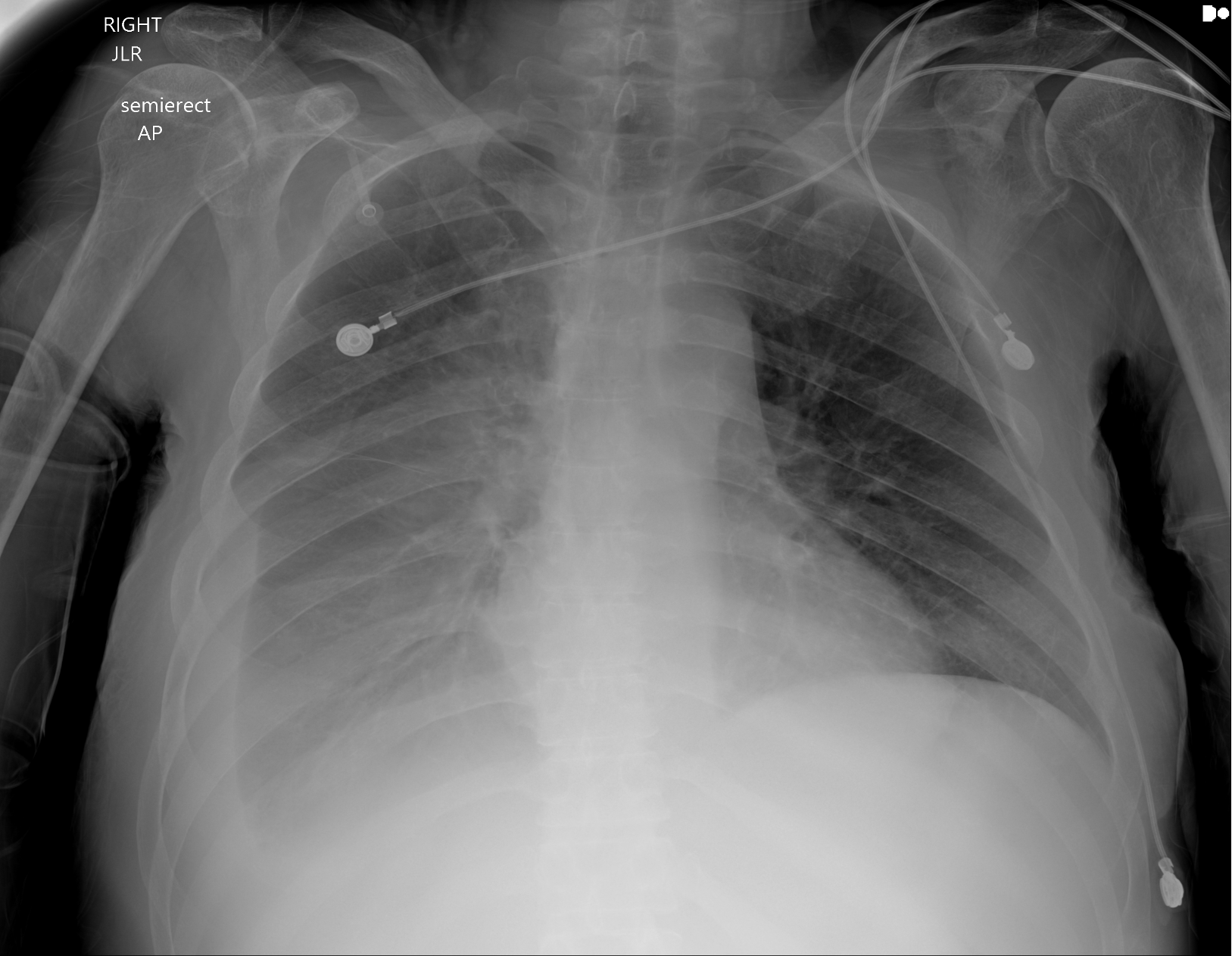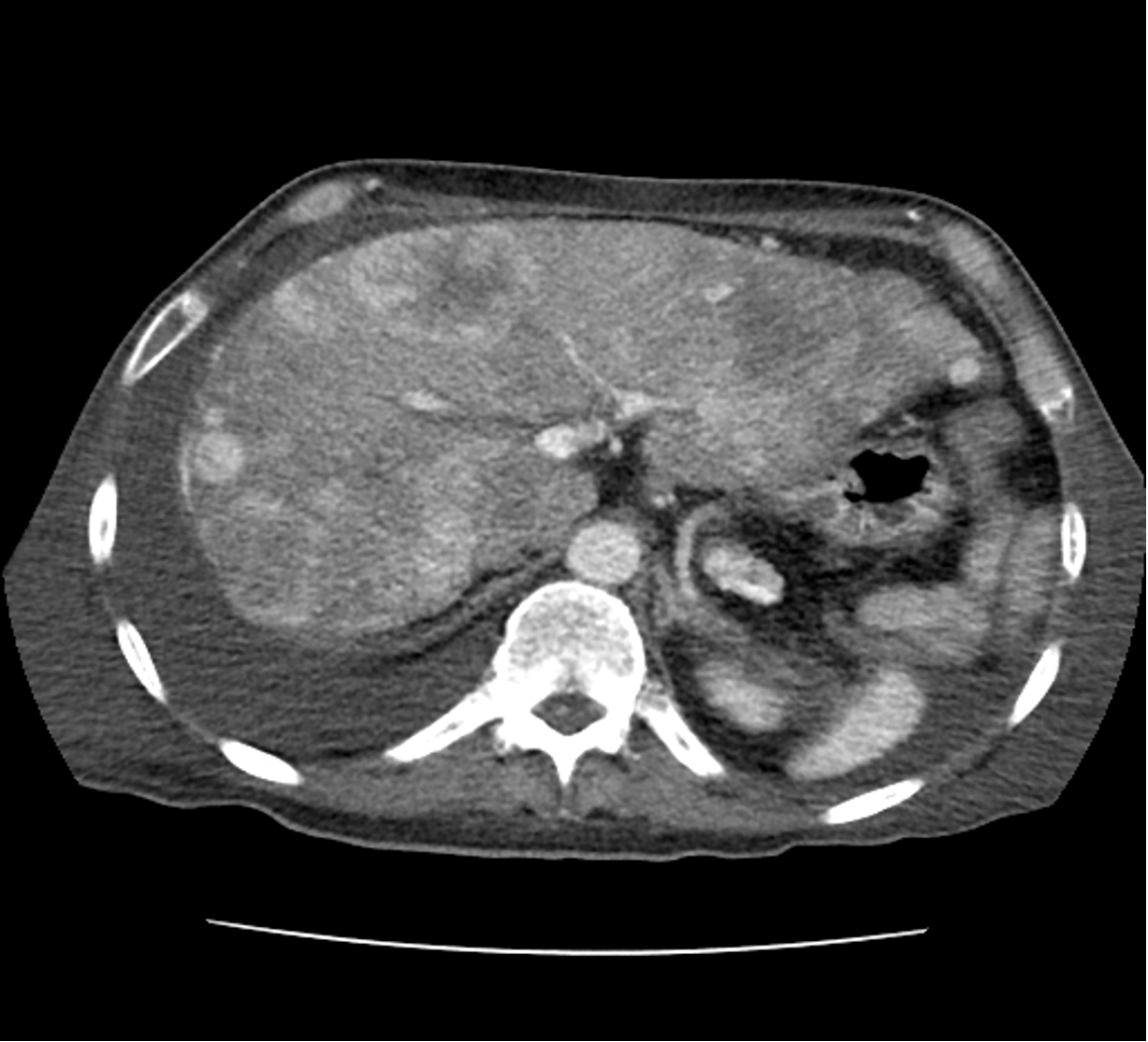Case Presentation: A 62 year old incarcerated male presented to an outside hospital for a near syncopal event. He reported increased general fatigue, dyspnea with exertion, edema of bilateral legs, weight gain of 20 pounds, and orthopnea over the prior two months without any other associated symptoms. His past medical history included diabetes mellitus type 2, hyperlipidemia, hypothyroidism, prev herpes zoster of the right eye with V1 distribution, and a traumatic brain injury due to boxing resulting in bilateral subdural hematomas requiring craniotomy 7 years prior. He was found to have a moderate size right pleural effusion and liver lesions during his workup at the outside hospital and was transferred to our facility for higher level of care. On exam the patient had moderate hypotension, diminished lung sounds in the right base, S3 heart sound, grade 3/6 holosystolic murmur, and +2 pitting edema of bilateral upper and lower extremities. Laboratory findings were significant for elevated brain natriuretic peptide of 1,700. The pleural fluid analysis was consistent with transudate and no malignant cells on cytology. A transthoracic echocardiogram revealed severe tricuspid and pulmonic valve regurgitation with normal left ventricular systolic function. Pathology of the biopsied liver nodules was consistent with grade 1, metastatic, well differentiated neuroendocrine tumor.The patient had minimal response to intravenous diuresis. He is currently being evaluated for valve replacement and treatment with somatostatin-analogs.
Discussion: Carcinoid tumors are rare, occurring in approximately 1-2/100,000 people, and can arise anywhere in the body. Carcinoid syndrome refers to the symptoms caused by the release of vasoactive amines, polypeptides, and prostaglandins by the tumor and is managed with somatostatin-analog therapy. Carcinoid heart disease presents as an uncommon combination of acquired tricuspid and/or pulmonic valve disease without left-sided valve disease that result in right side heart failure.
Conclusions: Carcinoid heart disease eventually occurs in up to 50% of people with carcinoid tumors, may be the initial presentation of carcinoid disease in 20%of these people, and is a major cause of morbidity and mortality for patients. The mainstay treatment for carcinoid heart disease is valve replacement. Pharmacological management with diuretics only temporarily improves symptoms and somatostatin-analogs may inhibit progression of the disease but do not reverse damage of the valves. Hospitalists should have prompt suspicion for and rapid diagnosis of carcinoid heart disease in patients who present with right-side valve disease in absence of left-side valve disease. Early recognition of carcinoid heart disease is essential to optimize the patient’s opportunity to benefit from the mainstay therapy of valve replacement.


